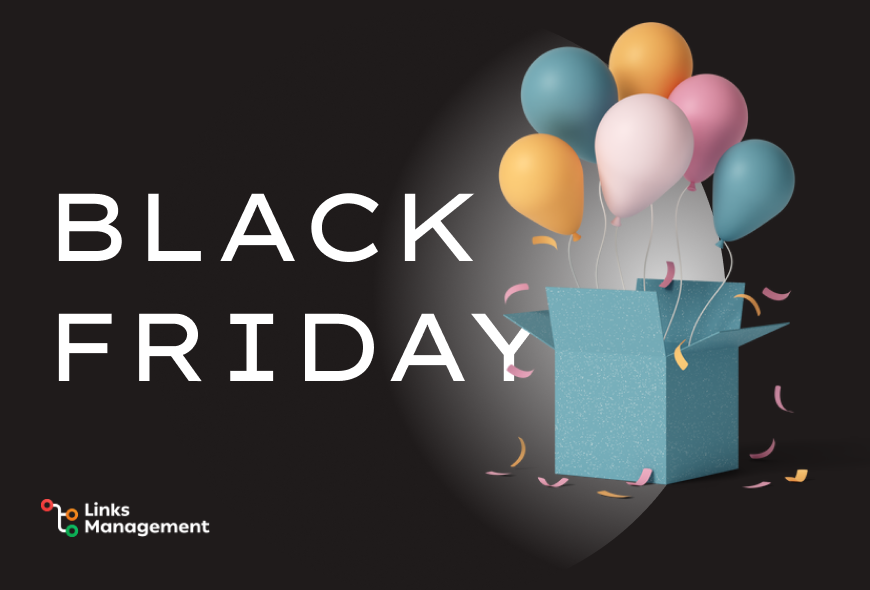A Guide to Social Media Reactions: Go Beyond “Likes” for Business Success
Once upon a time, when life was still simple, all you needed to show that you liked a social media post was to smash the “like” button.
Then, one day, Facebook decided to be like that one friend who couldn’t choose what they wanted at a diner. And guess what? That’s how Facebook created social media reactions. Before we even realized it, other platforms joined.
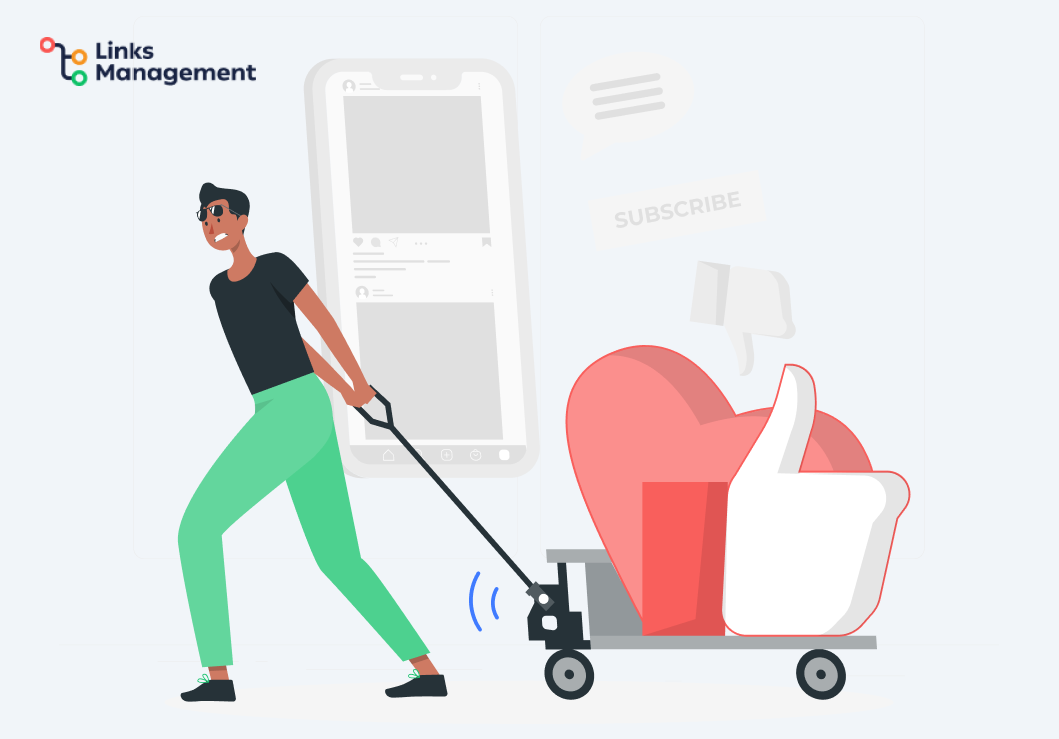
So, now there are more options than ever before, but how does it affect your business?
The thing is — there are billions of people sharing their experiences with brands online. Being able to analyze these reactions can give you a window into what your customers want and what drives them.
These insights can completely change your approach to marketing. Excited yet? Let’s dive in.
Contents
What Are Social Media Reactions?
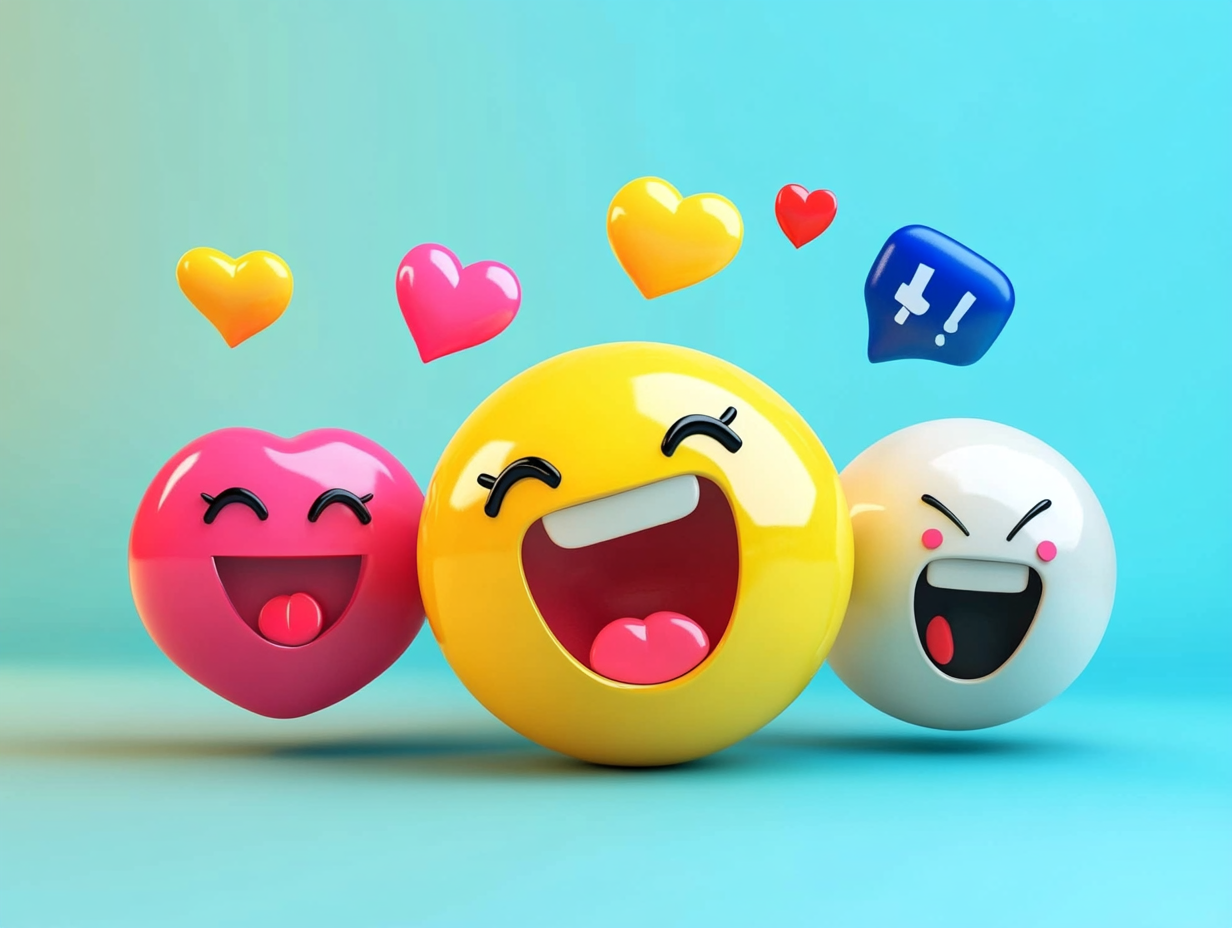
Social media reactions are the digital equivalents of your facial expressions. They are like a collection of emojis that show the emotions your customers experience in response to your posts, comments, and other interactions.
Examples include the “Wow 😮,” “Sad 😢” and “Haha 😆” emojis, etc.
Since they let customers express their feelings without typing out a full response, they are quite popular. You know, typing out “lol” can be too much work:)
Why Are Social Media Reactions Useful?
When you aren’t limited to the “like” button, you get to know more about your audience:
- Their emotions — both positive and negative.
- Contextual feedback — this shows how the audience feels about your content.
- Engagement insights — accurate data about your audience sentiments and engagements.
Types of Social Media Reactions
As such, these social reactions can come in different types:
- Comments — a written response to your post;
- Shares — when someone reposts or sends a link to your post to another person;
- Reactions — when they hit the 👍 button or any similar emoticon;
- Clicks — when they click on your hyperlinks;
- Views — the number of times your post shows up on people’s feeds;
- Impressions — potential people who might engage with your posts.
Keep in mind that originally, these were and still are a different form of “like” on Facebook from where it all started back in 2016. Yet, the depth we have now helps us better understand how people feel about our content and business.
Besides, if used correctly, they can help you build good relationships with customers and other brands, which can turn out to be the first step towards quality backlinks that come to you organically.
How Reactions Differ Across Leading Social Media Platforms
Social media interactions can be a little like fingerprints — unique to the platform. So, let’s look at the different types they are based on the popular platforms we all use:
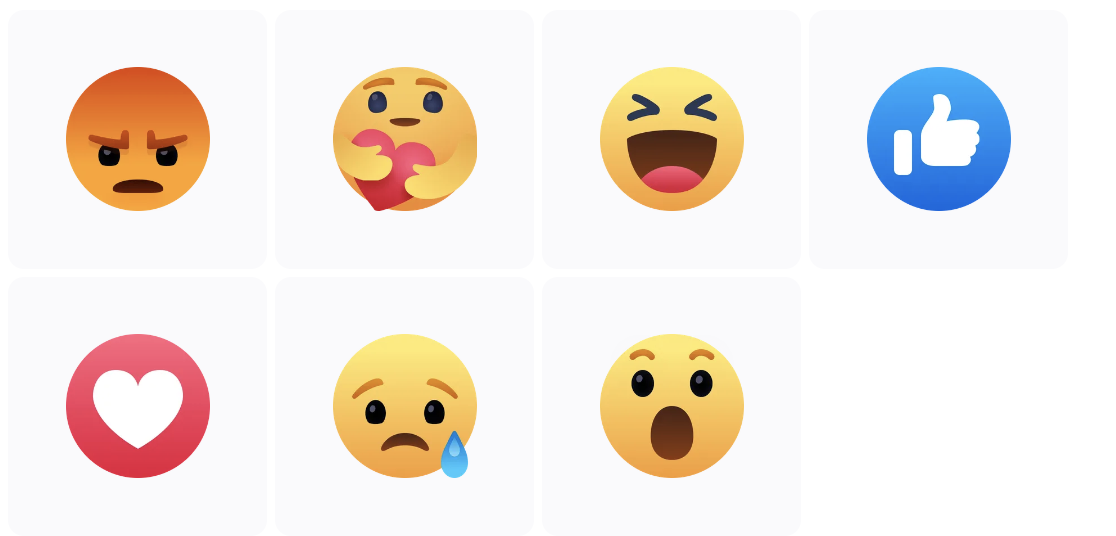
Source: IconScout
On Facebook, people can express their feelings with more than one emoji. Let’s see some of Facebook reactions’ meaning:
- Love❤️ — shows appreciation or says they adore a post;
- Like 👍 – for approval;
- Haha 😂 — used in response to something that’s pretty funny;
- Wow 😯 — indicates shock;
- Sad 😢 — used to show an empathetic response to upsetting news;
- Care 🥰 — people use this to show they love and support a person or a cause.
Snapchat
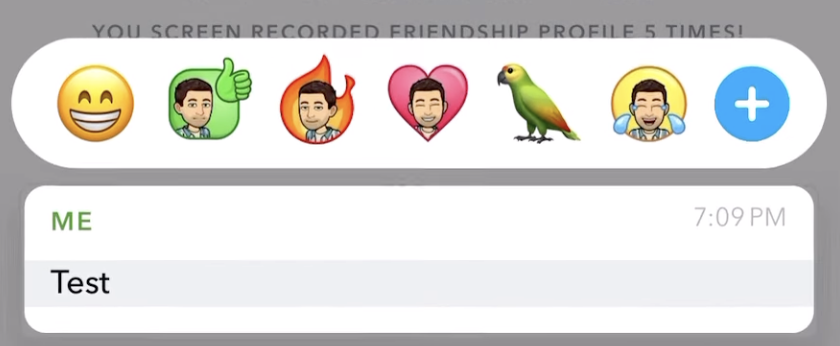
Source: YouTube
Snapchat is famous for its immersive and engaging chat experiences where users can freely express themselves.
This is due in part to the unique collection of custom Bitmoji looks, lenses, map reactions, stickers, filters, emoji reactions, and more. Here are the common social reactions you can find:
- Heart ❤️ — to show love and appreciation;
- Crying funny face 😂 — to express funniness;
- Sad/angry 😡— to show that you do not agree with something;
- Like 👍— to approve a post;
- Dislike👎 — to show disapproval;
- Nervous 😥— to indicate that something is stressing you out.

Source: LinkedIn Help
Similar to the Facebook emojis, with LinkedIn, you also get a wide range of reactions and social media icons like:
- Like 👍 — approval;
- Love 💗 — appreciation;
- Celebrate 👏— to recognize someone’s achievements and cheer them on;
- Funny 😄 — to show you find an idea in the post to be humorous;
- Insightful 💡— shows agreement with the ideas in a post and appreciation for it at the same time;
- Support 🤝— to show support for the person, situation, ideas, or cause discussed in a post.
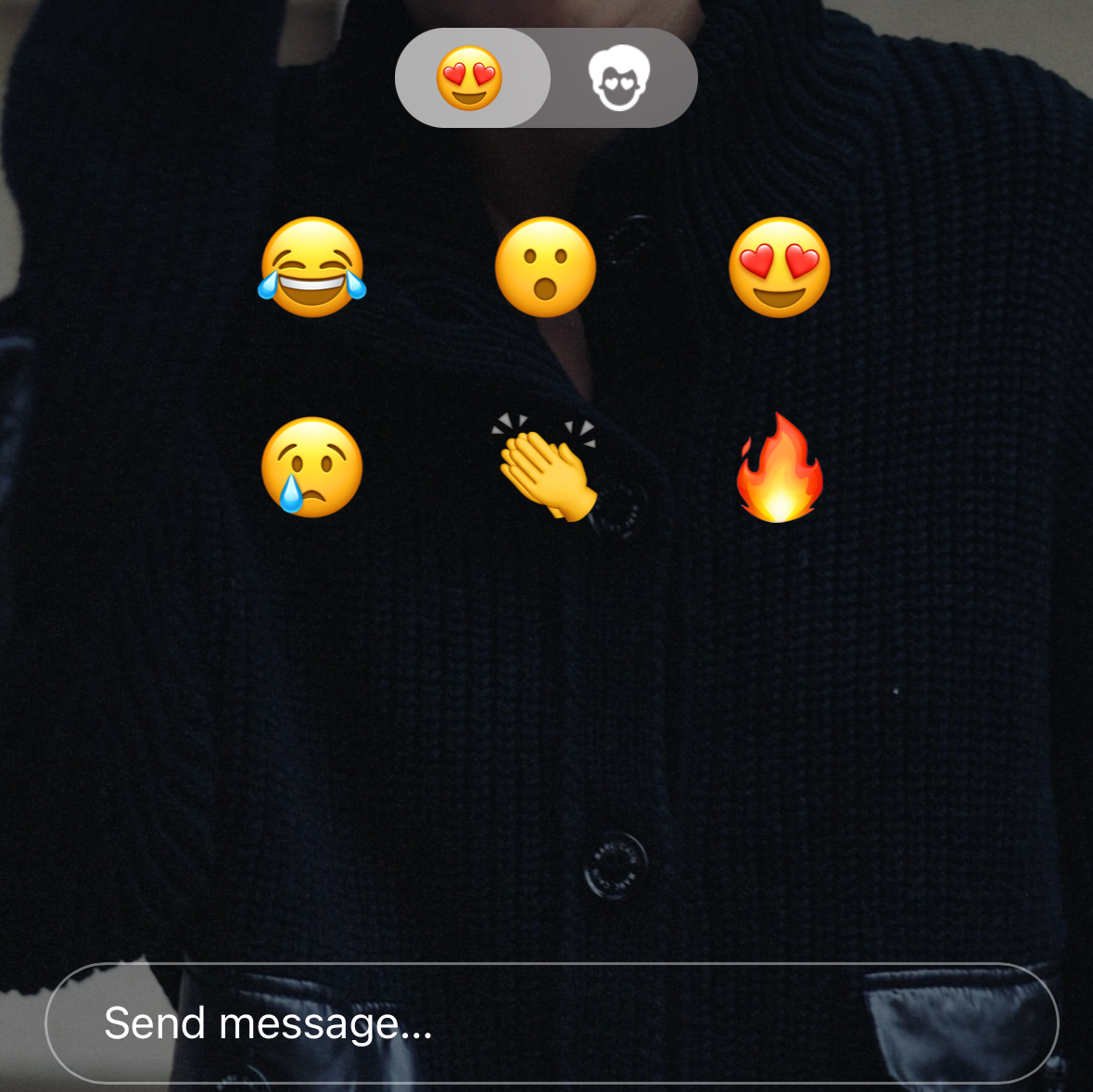
The Instagram reactions can be grouped into:
- Likes 👍 — for posts you enjoy and approve of (and want to see more of);
- LComments 💬 – where you type your approval or disapproval of the posts;
- LReactions in stories – this includes heart ❤️, laughing 😆emoji, crying 😭, fire 🔥emoji, and 100 💯 used to show immediate emotional reactions during live streaming or story viewing on the platform.
YouTube
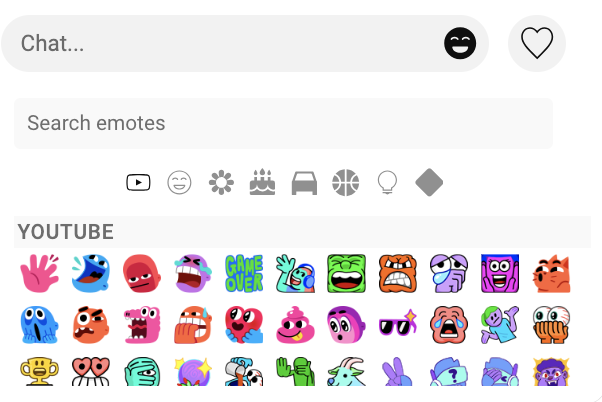
On YouTube, you get:
- Like 👍 /dislike 👎 — to show approval or disapproval of a post/video;
- Comments emojis 💬— a collection of YouTube emojis that show a variety of emotions like excitement, sadness, happiness, etc.;
- Quick reactions for live — like the quick reactions on Instagram, they express a similar range of emotions.
X

Source: @semrush on X
On X, you get just enough emojis in reaction posts to express your feelings in:
- Comment — where you and your customers can type a reply to a post;
- Quote/repost — for those who want to share a post with or without adding their own pov to the issue;
- Like — the heart symbol that indicates approval;
- Views — the graph button that displays the number of times the post was seen;
- Bookmark — to save a post for later;
- Share — for anyone who wants to share the post outside of the platform.
TikTok
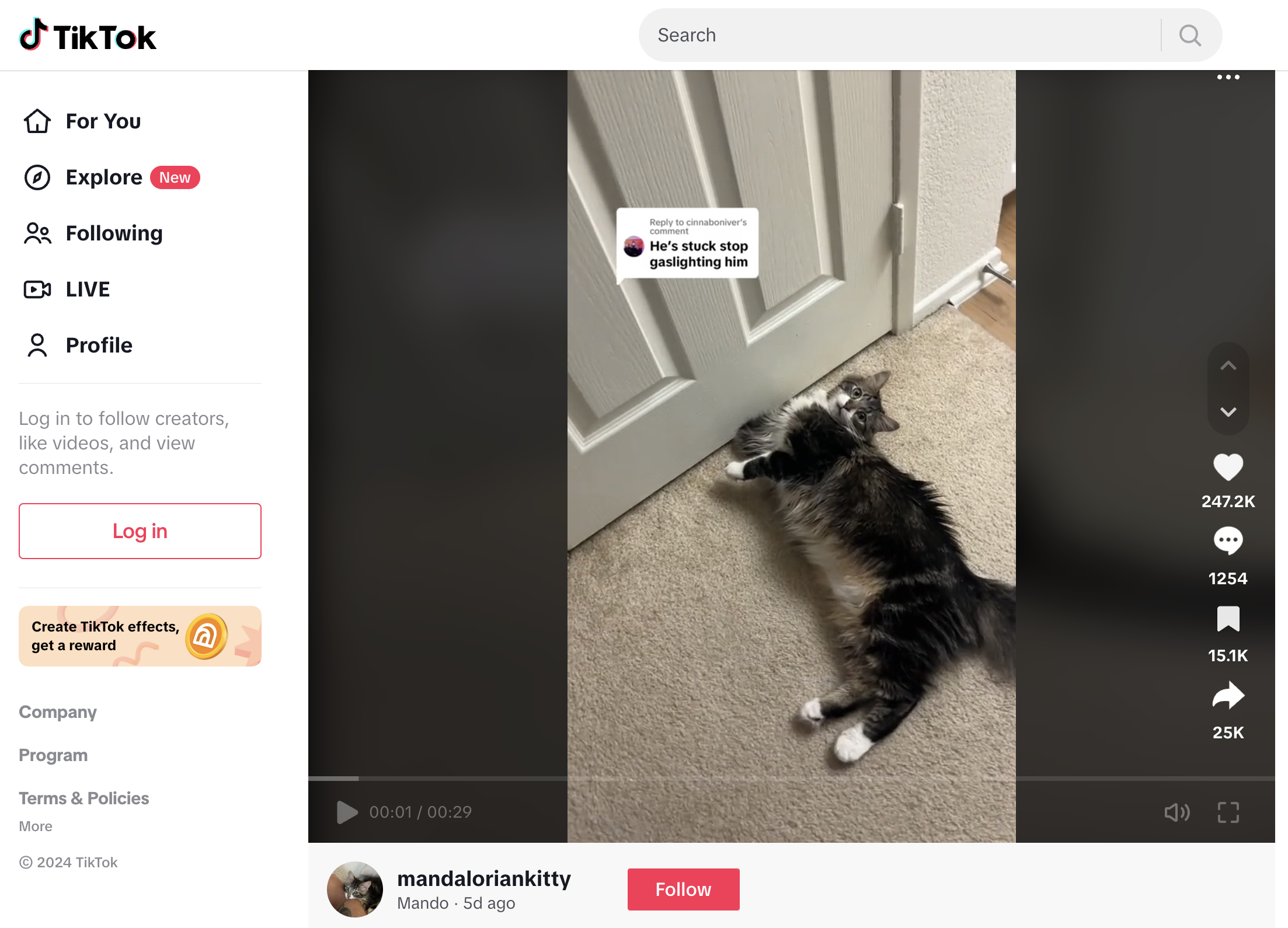
Source: @Mando on TikTok
Like reactions on Instagram, TikTok also gives you a wide range of ways to express your emotions, including:
- Likes — the heart symbol to show you appreciate a post;
- Comments — to share your feelings and opinions;
- Bookmark — to save your favorites for later;
- Share —- to repost, share, or save the video.
Importance of Social Media Reactions for Digital Marketing and Business
So, why bother to learn what those cute social media reactions and social icons mean? While it seems like something highly irrelevant, it is a really big deal for business success. Figuring out what they mean can hold a lot of value, including allowing you to:
Get More Detailed Feedback for Analysis
The reactions on Instagram and other social media platforms give you a clue about what exactly your target audience thinks about your content.
Each type of likes and reactions basically allows you to analyze more aspects of your user engagement so you can create better ads and marketing campaigns. Got a lot of “hahas” and “loves”? Then your content is definitely hitting the right spot.
If all you got were those angry, red-face emojis, then maybe you’ve posted something way too controversial. Are you getting mixed reactions? Then, it is time to figure out what the problem is (more on how to do that soon).
Show That You Care
No matter what niche you are in, the market is probably already saturated with various brands and products, which means tough competition. Clearly, you can’t afford to ghost your customers like a bad Tinder date.
When you pay attention to those likes, shares, comments, reactions, etc., and respond to them, it shows that you care. Your engagement is the digital equivalent of saying, “We see you, hear you, and value your opinion.” Make sure you mean it, though.
This is another way to create memorable interactions that customers can share with friends, stand out from other businesses, and increase brand loyalty and recognition.
Establish a Strong Online Community
Ever seen a brand develop a cultlike following? Looking at you, Apple and Lululemon. These brands command a strong online presence and have some of the most active online communities.
Many businesses think it is only possible for brands with a huge budget that allows them to do constant blogger outreach. Yet, it isn’t like that. It can start with sharing great posts that your audience identifies with and shares gladly.
When more people engage and share your posts, it creates a ripple effect where even more users now want to join the conversation. It’s only a matter of time before they start to build an online community around this shared interest.
These communities, in turn, become brand advocates, give you valuable feedback, and may even help you weather PR storms.
Adjusting Your Marketing Strategy
You already know that those social reactions pack a punch, but here’s where it gets more interesting.
The more you look closely at those reactions, the easier it gets to know what’s working and what’s not. Some posts are going to get more love than others, and occasionally, a post is going to get ignored.
This helps you understand what makes your audience tick — eh, click. So, now you have the insights to tweak and come up with a better marketing strategy, content plan, brand voice, etc. If you’re a new business, then this is a goldmine for you.
Receiving Social Proof for SEO
Wondering about social signals for SEO? It’s not news that social media presence doesn’t count as a Google ranking factor. But hey, all those users you’re interacting with on social media definitely influence your trustworthiness.
The more likes, reactions, and shares you get, the more popular you become, which makes other new customers likely to check you out. If most of your reactions are positive, then they are going to trust you, and this is how social proof works.
Best Ways to Analyze and Interact With Social Media Reactions
Best Ways to Analyze and Interact With Social Media Reactions
1. Pick a good analytics tool. The right tool is your sidekick, so pick a good sentiment analytics tool. This will help you understand the emotions and get insight into how customers feel about your service and product.
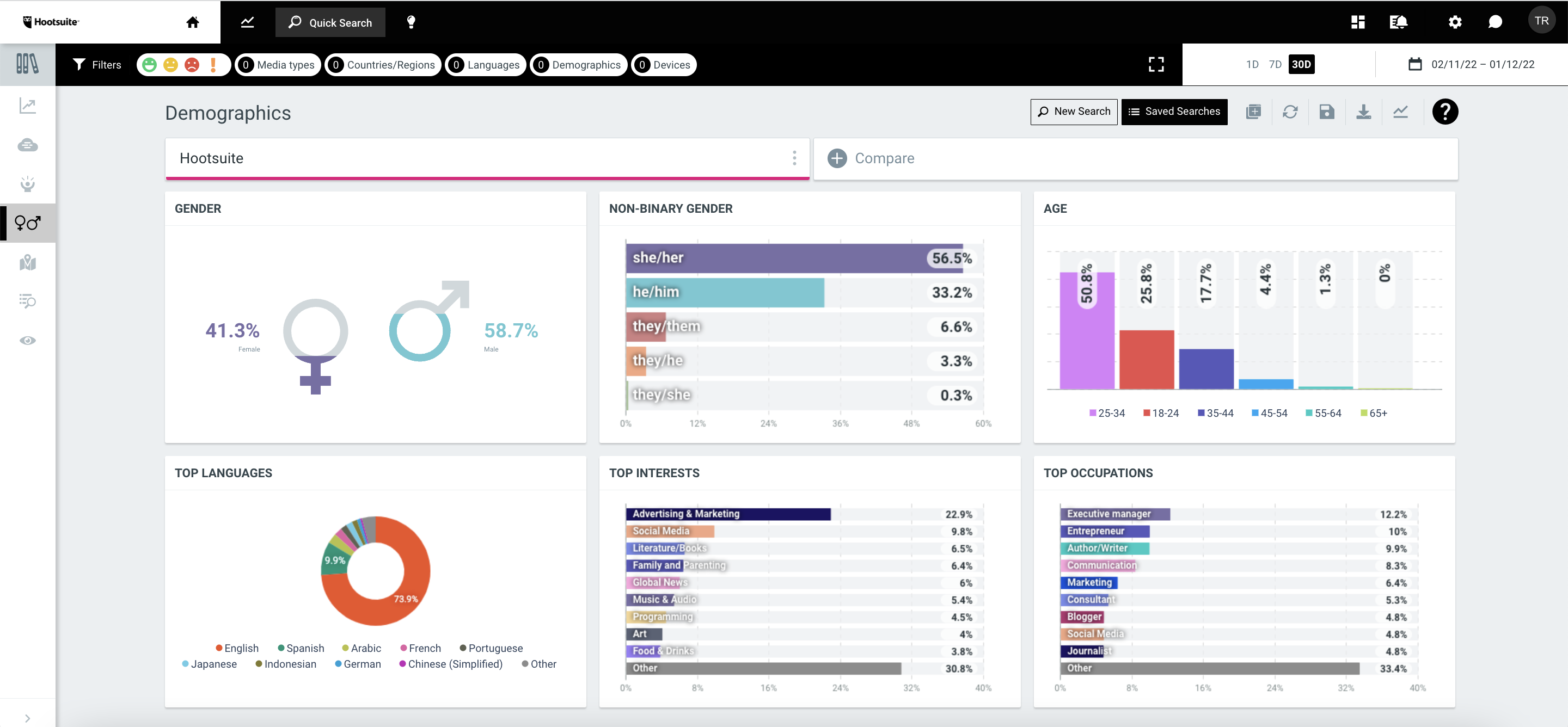
Source: Hootsuite
2. Monitor the trends and patterns in the reactions. Check what types of posts get the most love and stuff like that.
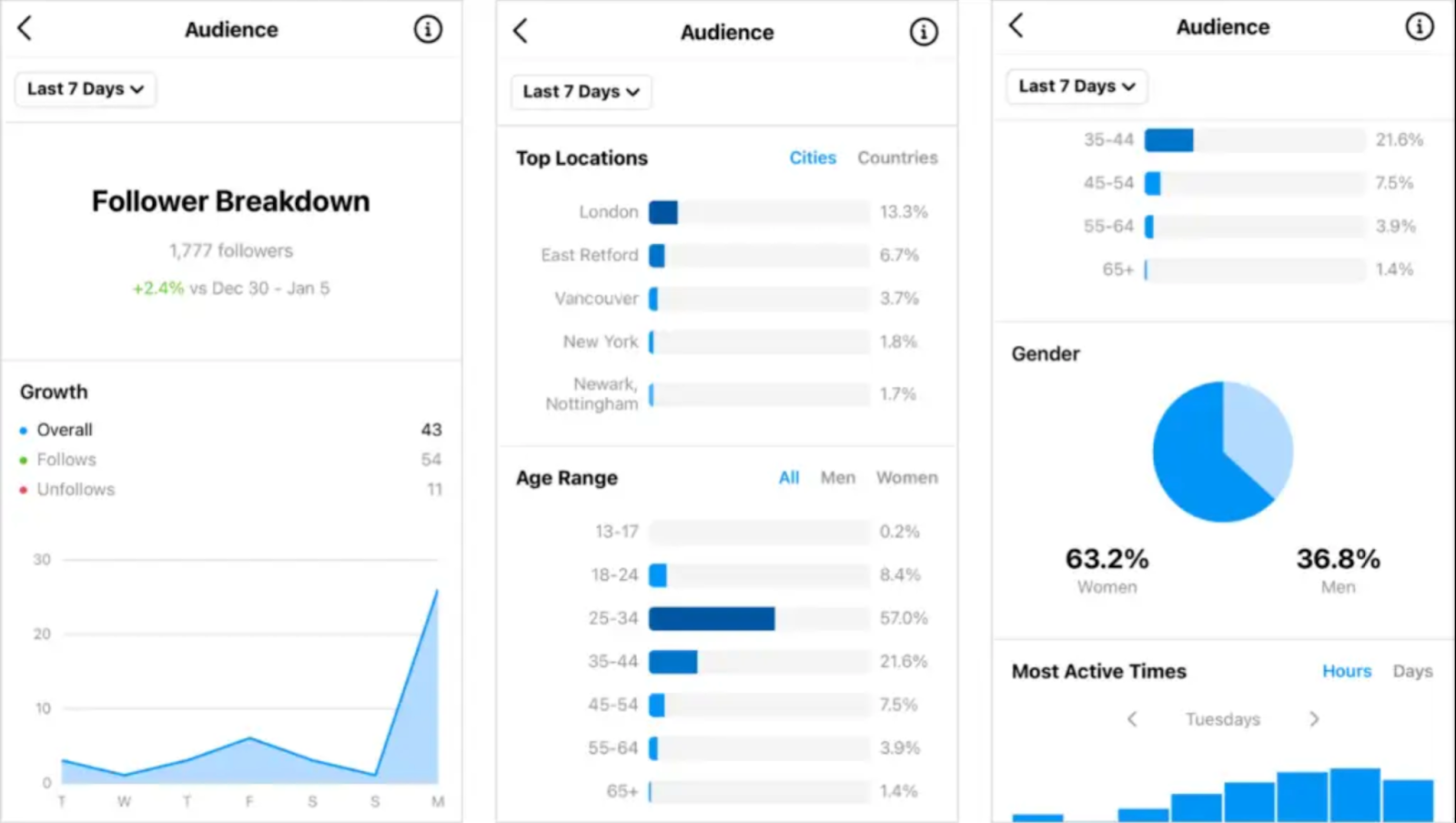
Source: Keyhole
3. Engage, engage, engage.Don’t post and dash. Instead, engage with your readers even if their reactions are negative. This shows you care about their feelings and opinions.
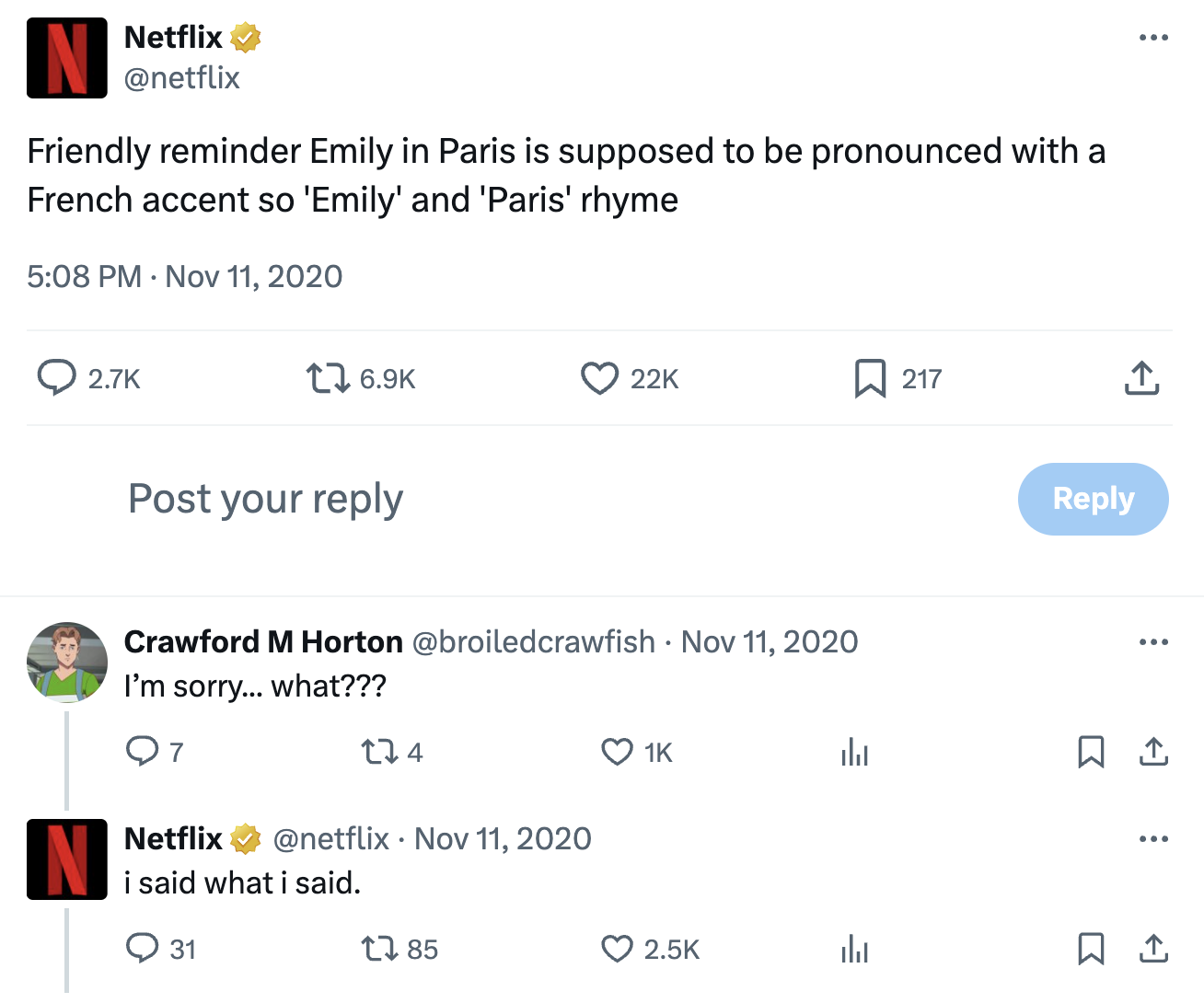
Source: X
4. More reaction-worthy content, please. Now, you have everything you need to make more content that resonates emotionally with your audience.
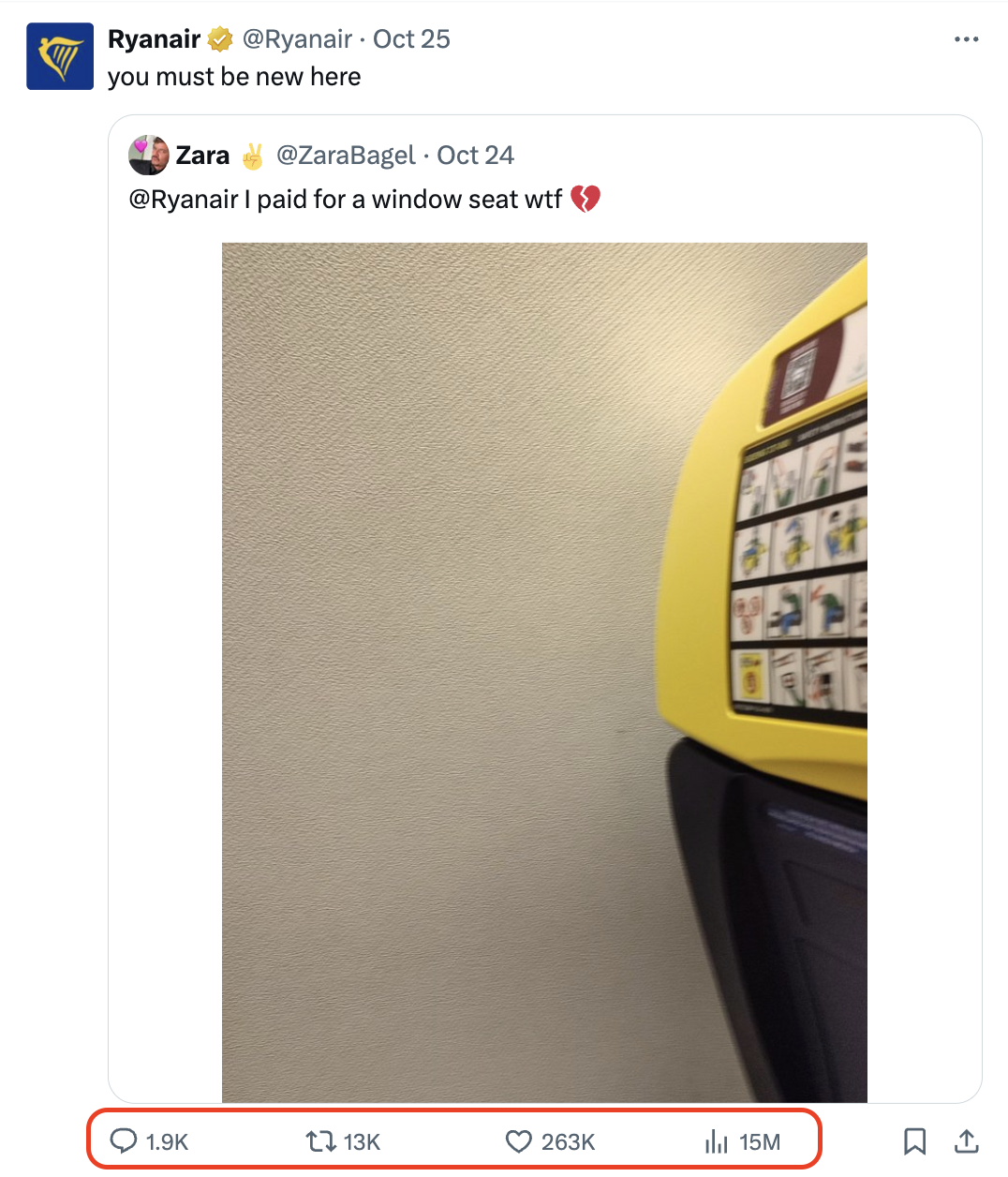
Source: X
Conclusion
If there is anything else we want to say, it is this — whatever you do, remember that there are real people behind your social media reactions. And they are the ones who can become your lifelong customers.
So, treat the reactions you get on your content as early warning systems that can help you find and fix some issues or give your people more of what they like.
Then, use the insights it supplies you to adjust your old marketing tactics and come up with creative ones, too. This way, you will be on the right track for business success.
Enter URL & See What We Can Do Submit the form to get a detailed report, based on the comprehensive seo analysis.





